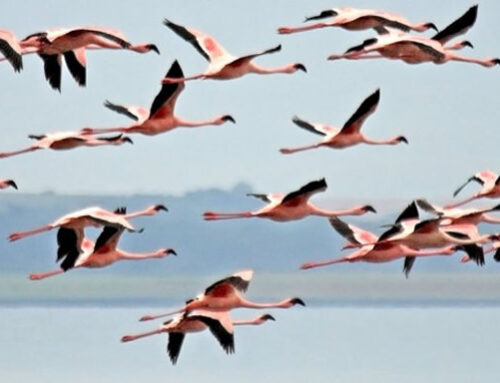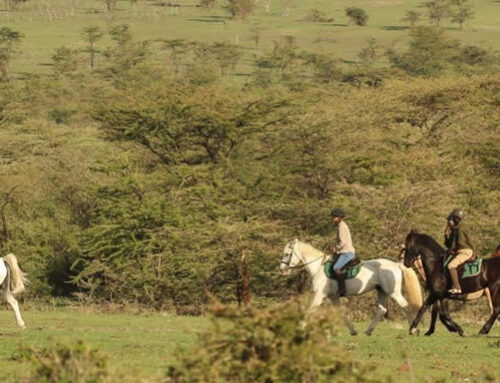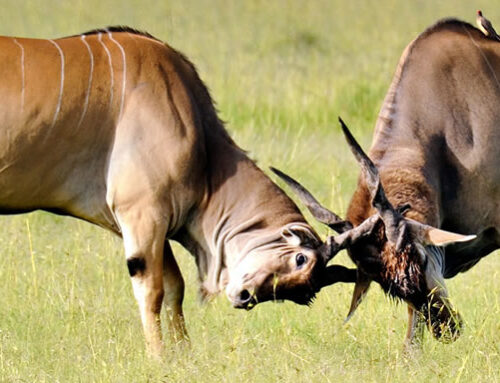THE BEST OF KENYA GREEN CAMPING
This involves an adventure which starts from the Aberdares Ranges in the Central Region of Kenya through the Great Rift Valley and ends up at the Great Mara Ecosystem.
Duration of the safari is 9 days
This involves an adventure which starts from the Aberdares Ranges in the Central Region of Kenya through the Great Rift Valley and ends up at the Great Mara Ecosystem.
Day 1: Nairobi
Arrive at the Airport, met by a Representative from Beyond Safaris and be transferred to Nairobi Safari club-BB
Day 2: Nairobi-Aberdare Ranges
Breakfast and depart for the Aberdares mountains. Arrive in time for lunch. Set the camp site at the Fishing Lodge. Afternoon at leisure
The Aberdare Mountain ranges soar to peaks of 13,000 feet and dip into deep, V shaped valleys with streams and rivers cascading over spectacular waterfalls, including Kenya’s longest fall of approximately 1,000 feet! Located in the heart of the Kikuyu tribe highlands area, in Central Kenya, traditional folklore states that the Aberdare Mountains are one of the homes of Ngai, God
To the east of the ranges are the fertile farming lands of the Kikuyu tribe, which were settled by the colonists in the early decades of the Twentieth century and Mount Kenya. The area between the Aberdares and Mount Kenya are part of what became known as the European highlands. To the west, the range falls steeply away into the Rift Valley and offer superb views of Lake Naivasha and the distant Mau Escarpment.
The steep hillsides of the western edges tend not be as attractive to wildlife as the gently undulating slopes of the eastern side, which, despite periods of mist, rain and cold spells, attract a wide variety and quantity of wildlife. There are three main eco-systems within the Aberdare Mountains; the rain forest, which gives way to dense bamboo forests, which itself gives way to moorland as the altitude rises.
The forest is home to a multitude of elephant, buffalo, giant forest hog and the endangered Black Rhino. The Aberdares are also an excellent area for spotting the elusive leopard and occasional sightings have been made of the Golden Cat. Black and white Colobus and Sykes Monkeys are easily seen, as are waterbuck, reedbuck, duikers, serval cats and bushbuck. Melanistic cats appear to be quite common in the high altitudes of the Aberdares and black serval cats are spotted fairly often.
The best viewing in the forest areas is in the Salient area of the park, where both Treetops and The Ark lodges provide superb nighttime viewing in this area of gentler slopes and slightly less dense forest. During the rains, the majority of the game spends its time in the forest rather than on the moorlands.
As you rise in altitude, through the bamboo belt, it is possible to spot the elusive bongo antelope and the giant forest hog, but viewing in this incredibly dense growth of bamboo is challenging to say the least! However, bird viewing is excellent; keep an eye out for the magnificent crowned eagle as it hunts for one its favorite meals, a Colobus monkey.
Once above 10,000 feet, the bamboo gives way to rolling moorlands, tumbling; crystal clear streams which are well stocked with trout and varieties of lobelia, groundsel and heather cover much of the ground. Here eland, lion, elephant and buffalo may be found in addition to the numerous birds, such as the Jackson’s francolin, sparrow hawk, African Goshawk, sunbirds and plovers.
The moorland area offers superb scenery, excellent opportunities for high altitude hiking as well as fly fishing, which is encouraged as the trout is not an indigenous species and was introduced to the area.
Far more than simply a wonderful wildlife area, the Aberdares are also a vital water catchment area, the rain forest feeding most of the local area and the city of Nairobi from its rivers and streams. Many of the mighty Tana River headsprings start in the Aberdare Mountains.
The area is also famous as the 1950s headquarters of the Mau Mau Rebellion, with ‘General’ Kimathi’s hideout still a much-visited attraction. Princess Elizabeth became Queen of the United Kingdom while staying in the Aberdares, at the now famous Treetops Lodge and the National Park is a favorite spot for a resident’s weekend getaway with its campsites, self-catering bandas and walking possibilities.
The Aberdare Range National Park is 767 square kilometers and contains the two highest peaks; Lesatima at 13,120 feet and Kinangop at 12,816 feet. The park has been a protected area since 1950. Due to its altitude, the Aberdare Park has a climate closer to that of Europe than of the tropics. Jumpers, sweaters, jackets, thick socks, waterproofs and, during the April/May rains, even thermal underwear may be needed if staying in the moorland areas overnight.
A very different landscape from the wide, open plains of the African savannah, the Aberdares have been described as ‘Scotland with lions’ and is a well worth a stop on any tour of Kenya.
Day 3: Aberdare Ranges-Fishing Lodge Campsite
After breakfast, take a guided trek through the Mountain forest, moorland viewing high altitude vegetations.
Day 4: Aberdare Ranges – Lake Nakuru
After breakfast, depart with picnic lunches for Lake Nakuru National park, find for a nice site and have lunch, proceed for a game viewing drive in the park and later head south to Lake Naivasha where you will camp for overnight
Lake Nakuru is highly valued locally and internationally because it is a wetland of international importance (Ramsar Site) mainly as a home of millions of flamingoes, a waterfowl habitat and the first Rhino Sanctuary.
Lake Nakuru habitat is rich in a diversity of bird species i.e. 450 species and 150 species respectively making them and ornithologist haven. A variety of animal species are found in this ecosystem including rare and endangered species such as Black Rhino, White Rhino and Rothschild giraffes.
Dinner and overnight-Camping Nakuru
Day 5: L.Nakuru- L. Naivasha campsite
Early morning game drive, take your breakfast and depart slowly for Naivasha. Lunch then have afternoon at leisure or go for a boat ride at a cost.
Dinner and overnight Burches campsite
Day 6: L.Naivasha-Masai Mara
After breakfast depart for Masai Mara through the Great Rift Valley. Enjoy the plains and savannahs of Africa.
Arrive at Masai mara for lunch, the worlds leading wildlife conservation area with highest wildlife density and diversity. This is home to the annual great wildebeest migration.
Lunch at the Basecamp Masai mara
Afternoon depart by car, drop off on the way and then walk and end up at Dorobo Bush camp.
Dinner & Overnight –Dorobo Bush Camp
Dorobo Bush camp is a small and intimate tented camp situated in the wilderness away from the game reserve.
Six tents, twelve beds, bush bar and full menu – the unmatchable luxury of simplicity! Experience the magic of the Mara. Enjoy the company of singing Maasai around the campfire, listen to their tales about Dorobo- the hunter Maasai and simply be…
Main activity here is walking safari is the main activity.
Day 7: Masai Mara – Dorobo Bush Camp
Spend the full day on guided walks and close cultural association with the Maasai.
Dinne& Overnight –Dorobo Bush Camp
Day 8: Masai Mara – Dorobo Bush Camp
After breakfast, take picnic lunch with you and go out for a full day game viewing drive and return to the camp late afternoon .A short walk and back to the camp for a final campfire with the Maasais
Dinner & Overnight –Dorobo Bush Camp
Day 9: Masai Mara-Nairobi
Wake up to your last day in Mara. Slowly have your breakfast and then proceed to Nairobi. Later connect your flight home.
Included in price:
- Airport transfers in Nairobi.
- Accommodation Full board while Camping
- All transport by road in a Land Cruiser(4×4)
- English speaking guide/driver
- Private cook
- Drinking water
- All game drives
- All park fees
- Flying Doctors evacuation cover within Kenya
Not included:
- Personal expenses, drinks, tip etc.
- Insurance or cancellation insurance
- Both domestic and international flights
- Visa












